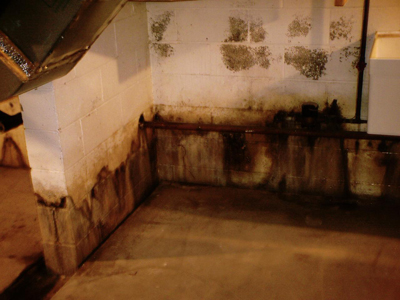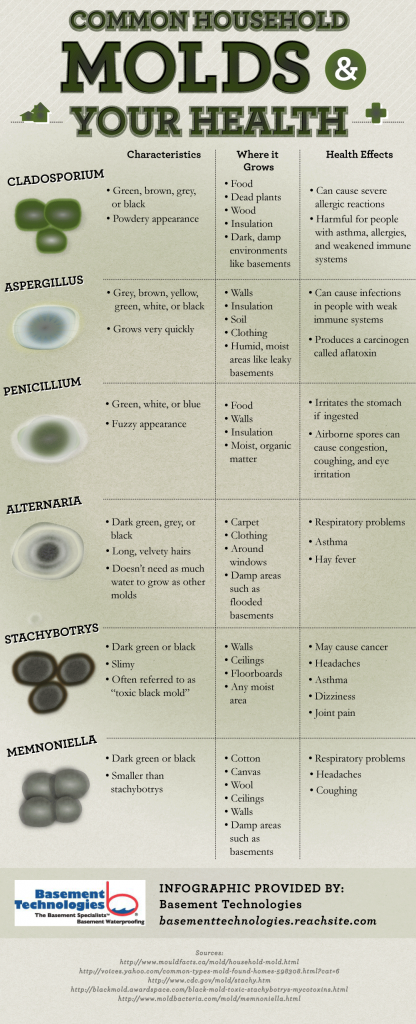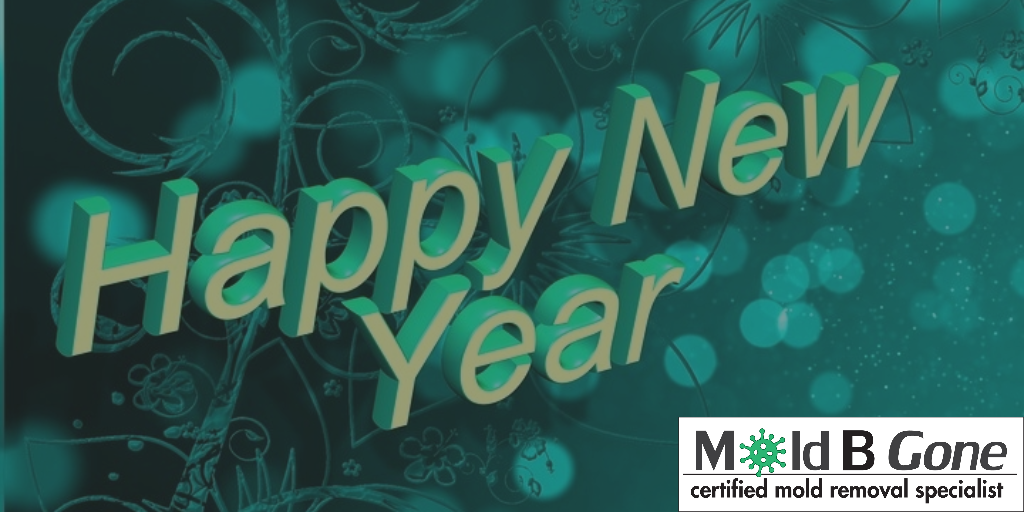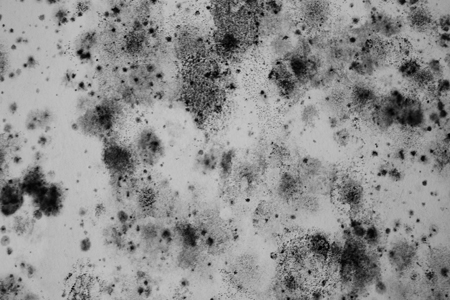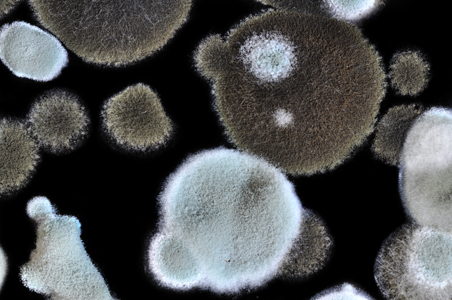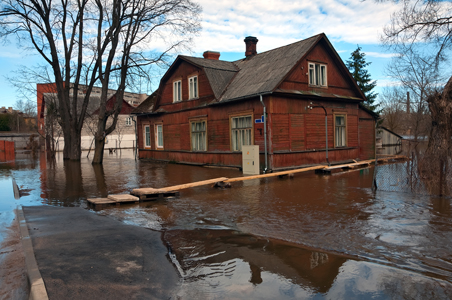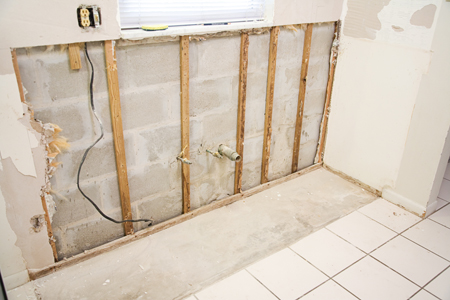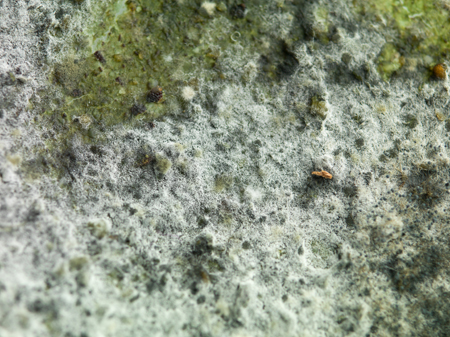
by Eric Brown | Jan 13, 2017 | Basement Mold, Beware Of Mold When Buying A Home, Flood Clean Up, Health, Indoor Air Quality, Killing Mold, Mold Facts, Mold Information, Mold Inspection, Mold Remediation, Mold Removal, Mold Removal Cost, Questions and Answers, Top 15 Mold Prevention Tips, Toxic Mold, Water Damage Restoration
The Key To Mold Prevention Is Moisture Control!
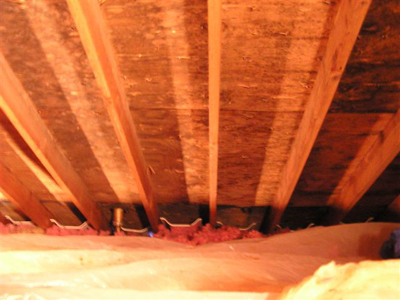
The Key To Mold Prevention Is Moisture Control!
Mold spores are all around us, outside and indoors. Mold actually serves a purpose in our eco-system to consume dead organic materials.
Problems with mold arise indoors primarily because our homes are made of dead organic materials, meaning mold can grow anywhere in your home: on carpet, clothing, food, paper, and even in places you can’t see, such as the backside of drywall, areas inside walls around leaking or condensing pipes, and above ceiling tiles.
The simplest way to detect a mold problem is using your own senses. A musty odor is one indication. Not only is mold smelly, but can be many different colors from black and gray to orange and green. Watermarks on the ceiling and walls are also a telltale sign.
There are two key reasons, you should be concerned about preventing mold.
First, mold can be difficult and costly to remove.
Second, mold can produce allergens, irritants, and mycotoxins that can compromise your health. Because mold spores are very small and can easily be inhaled into the lungs, it is harmful to live in a home with high mold levels.

Mold Can Compromise Your Health
Mold growth can be prevented. Mold growing in your home requires moisture, warmth, and food. Depriving mold of any of these three items will stop it from growing, but it will not kill the mold that is already there. Mold spores will remain dormant, and if the moisture, warmth and food all reappear, mold will begin to grow again.
So what can you do if you’re concerned about mold growing in your home?
Listed below are the top 15 mold prevention tips.
The Top 15 Mold Prevention Tips
Mold Prevention Tip #1: Audit Your Home For Problem Areas!
It is difficult to mold-proof a home. However, you can take proactive steps to determine if you have problems that could lead to mold concerns.
Does the basement flood?
Do you notice frequent condensation on windows?
Is there a water stain on the ceiling from a persistent leak?
Is your basement damp?
Does water flow into your home’s foundation?
Addressing these questions may entail some upfront costs to fix, but it will be worth the investment in preventing future mold problems.
It is also important to note that if you are renovating your home or considering building a new home, that you may want to consider researching mold prevention products, including mold-resistant drywall and sheetrock, and mold inhibitors for paints.
Mold-resistant drywall is recommended because traditional drywall is made up of gypsum plaster core pressed between piles of paper, making it highly susceptible to mold. What this means is that in the presence of moisture and water, traditional drywall acts like a sponge absorbing the moisture leading to mold. Since traditional drywall is so porous, the only remedy to removing the mold is to tear out the drywall.
In contrast, mold-resistant drywall is paperless because the gypsum core is covered in fiberglass, meaning it is water-resistant and therefore less susceptible to mold growth. Moisture resistance drywall should be used in bathrooms, laundry rooms, basements, and kitchens because these areas of the home are most prone to moisture.
Mold Prevention Tip #2: Dry Wet Materials Immediately!
Mold can not grow without moisture and given the right conditions, it will begin growing within 24 to 48 hours.
With this in mind, tackle we areas right away.
- Don’t leave wet clothes or other items lying around the house, dry them outside if possible.
- Dry spills on carpet and floors.
- Dry your clothes after washing them by putting them in the dryer soon after the wash cycle is complete.
- If heavy rainfall causes seepage into your basement, make sure you dry the area promptly and contact a company to waterproof your basement to prevent future occurrences.
- If you experience a flood event, dispose of water-damaged carpets, bedding, and furniture if they can not be dried completely. Ideally, contact a restoration company to manage the clean up and drying process.
Mold Prevention Tip #3: Clean, Disinfect, and Dry Surfaces!
Vacuum and clean regularly to remove possible sources of mold growth.
Pay special attention to bathrooms and other areas of your home that are likely to generate a lot of moisture.
Non-porous surfaces (tile, stone, laminate) can be cleaned well with disinfectants and other cleaners.
Mold Prevention Tip #4: Repair Water Leaks!
Repair water leaks in your roof, windows, or any other part of the home as soon as possible.
Over time, constant leaks will cause moisture to buildup leading to mold growth.
Mold Prevention Tip #5: Use Area Rugs!
In portions of your home that are susceptible to moisture, use area rugs or washable floor surfaces rather than wall-to-wall carpeting. If you use area rugs, launder them periodically.
Mold Prevention Tip #6: Increase Air Flow!
Prevent moisture buildup by increasing the air flow within your home. Without good air flow, excess moisture can appear on your walls, windows, and floors.
To increase air circulation, open doors between rooms, move furniture away from walls, and open doors to closets.
In addition, open windows to allow fresh air to flow indoors.
If you don’t already have an HVAC system that has an outside air intake to bring in a steady stream of outside air, consider installing one.
Mold Prevention Tip #7: Proper Ventilation!
Routine daily activities such as cooking, taking a shower, and washing laundry can create excess moisture in your home.
Prevent moisture with proper ventilation.
Vent appliances that produce moisture (clothes dryers and stoves) to the outside, not to the attic or crawl space.
Use AC units and dehumidifiers (especially in humid climates), but make sure they don’t produce moisture themselves by checking them periodically and cleaning them as directed by the manufacturer.
Energy-efficient homes are prone to holding moisture inside. For this reason, it is important that you open windows or use exhaust fans in the kitchen and bathroom (especially when you are showering).
Mold Prevention Tip #8: Make Sure Your Storage Room Is Dry!
Most homeowners have a room where they store materials such as books, clothes, camping gear, and other occasional use items.
It is important that you check the humidity of your storage room and make sure that there is no excess moisture because most of the materials you are storing are ample sources of food for mold.
Ideally, use your garage, a well built shed that prevents moisture intrusion, or a dry storage unit and not the inside of your home. Make sure there is air circulating in the storage area as well.
Mold Prevention Tip #9: Control Humidity!
Clues that your home has excess humidity include condensation on windows, pipes, and walls. If you notice condensation, dry the surface immediately and address the source of moisture, and invest in a dehumidifier if necessary.
To measure the humidity levels in your home, purchase a moisture meter from your local hardware store.
Ideally, the indoor humidity of your home should be between 30 and 60 percent.
In the winter, it is recommended that humidity levels are below 40 percent to prevent condensation from appearing on the windows.
Mold Prevention Tip #10: Check Your Attic!
Make sure that your exhaust fans are not venting into the attic because this will create excess moisture and lead to mold.
Also, your attic needs ventilation as well, so check this.
Insulation is important, particularly in cooler climates because snow accumulation on the roof can lead to ice damning issues which will cause moisture issues.
Mold Prevention Tip #11: Check Your Crawl Space!
Most homes in the Southern United States have crawl spaces.
Crawl spaces are a breeding ground for mold because there is so much excess humidity.
Mold growth in the crawl space is a particular concern because it will also impact the indoor air quality of your home.
If you find excess moisture or mold issues in your crawl space, then the area should be cleaned properly and the mold removed. To prevent future mold issues, wall-to-wall guide, durable, 14 mil vapor barrier should be installed over the ground and up sidewalls to 6 inches below floor joists. Installation of a dehumidifier will also help control humidity.
Mold Prevention Tip #12: Prevent Basement Condensation!
The cool basement floor and walls can be a source of moisture build-up, leading to mold and that musty smell many encounter in their basements.
To prevent condensation and future moisture issues, improve air circulation, run a dehumidifier, and install a foundation drain.
Ideally, make sure the basement walls are insulated properly to keep the walls warm and limit condensation.
As a final note, if you find that there is moisture intrusion into your basement through seepage, consider hiring a contractor to water proof the area.
Mold Prevention Tip #13: Direct Water Away From Your Home!
One of the best methods to prevent seepage into your crawlspace or basement is to ensure that water around your home sufficiently slopes away from the foundation of your home.
Do not put gardens or plants too close to your foundation so that watering them could cause water to flow toward your house.
If you water your lawn with a sprinkler, make sure the water does not hit your house or the area next to the foundation.
Mold Prevention Tip #14: Keep Your Gutters and Downspouts Clear of Debris!
Debris in your gutters or downspouts could block the flow of water from your roof. To prevent water accumulation, clean your gutters regularly and have them inspected for damage. It is also a good idea to check your ceiling for water stains, particularly after heavy storms.
In addition, make sure the area under your downspouts is properly graded so that rainwater from the roof flows away from your foundation. If the water is not flowing away from the foundation, extend your downspouts.
Mold Prevention Tip #15: Check Your Plants For Mold!
Plants help keep your indoor air clean. Unfortunately, mold grows in the soil of house plants and can also grow on the leaves, leading to higher levels of mold spores in the home. To hinder mold growth in plant soil, add some Taheebo tea to your house plant water in a mild solution. The oil of this tree, which withstands fungi even in rain forests, helps hinder mold growth in plant soil and can be found at natural food stores.
Questions? Mold B Gone is here to help. We are mold removal and mold prevention specialists backing our services with a minimum guarantee of 5 years. Call 678-697-6267 or send us an e-mail.
The infographic below is an exceptional summary of mold. Enjoy!

Mold Summary

by Eric Brown | Dec 16, 2016 | 37 Symptoms Associated With Mold Illness, Air Conditioning, Attic Mold, Basement Mold, Beware Of Mold When Buying A Home, Bleach and Mold, Can Black Mold Poison You?, Can Mold Kill?, Christmas Tree Mold, Chronic Fatigue Syndrome (CFS), Chronic Inflammatory Response Syndrome (CIRS), Commercial Mold Remediation, Commercial Mold Removal, Crawl Space Vapor Barrier, Crawlspace Mold, Dead Mold Spores, Flood Clean Up, Front Loading Washing Machine Mold, Health, How Toxic Is Mold?, Indoor Air Quality, Killing Mold, Mold and Asthma, Mold and Celebrities, Mold and Chronic Fatigue Syndrome, Mold and Depression, Mold and Famous People, Mold and Genes, Mold and Infants, Mold and Multiple Sclerosis, Mold and Parkinson's Disease, Mold and Pregnant Women, Mold and Sids, Mold and Sinusitis, Mold Facts, Mold In Apartment, Mold In Schools, Mold In The Bible, Mold Information, Mold Inspection, Mold Remediation, Mold Removal, Mold Removal Cost, Mold Risk During Renovation, Mold Sensitized Customer Testimonial, Mold Sensitized Success Story, Questions and Answers, Sewer Backup, Sippy Cup Mold, Stachybotrys Black Mold, Top 15 Mold Prevention Tips, Water Damage Restoration
The Ultimate Mold Education Resource (50 Articles)

The Ultimate Mold Education Resource (50 Articles)
The goal of Mold B Gone is to educate our customers about mold. We strongly believe that an educated and informed consumer can make better decisions when they have concerns about mold.
Included in this article are 50 links to articles that will help you learn about mold.
Please bookmark this page because we will update it with new articles as they are researched and published.
If you have questions about mold removal, crawl space mold removal and encapsulation, other services we offer, and/or our 1 year up to 25 year guarantee, call us, 678-697-6267, or send us an e-mail. We look forward to serving you. 🙂
Mold Facts and Information (13 Articles)

Mold Facts and Information (13 Articles)
-
Priests were the equivalent of today’s mold inspectors. This article lists the three passages cited in Leviticus. Learn more!
-
This article explains why your crawl space is humid and what you can do about it.
-
This article explains what you should and should not do if you find mold in your home, church, school, day care center, store, office building, restaurant, or hotel!
-
Several high profile celebrities have been impacted by mold. Listed in this article are 12 prominent celebrities that have battled mold.
-
This article explains what causes bad indoor air, health signs, and what you can do about it.
-
Mold Fact 1: The Key Ingredient Mold Needs To Thrive Is Moisture. There are 9 more mold facts explained in this article. What do you think they are?
-
Top 4 Reasons Mold Grows In Your Attic! The purpose of this article is to explain why mold grows in your attic and prevention tips.
-
Top 3 Reasons Your Crawlspace Has High Humidity. This article explains why your crawlspace is humid, why this leads to mold and how you can fix the problem!
-
Steps Residents Can Take If They Have Mold In Their Apartment! This article explains what you can do if you find mold in your apartment. Learn more!
-
This article lists and explains the top 10 reasons you need to be aware of mold!
-
The purpose of this article is to explain how and why your crawl space could be contaminating your indoor air.
-
This article provides you with information to help you determine if you have a mold problem and explains what you should and should not do if you do find mold.
-
The purpose of this article is to answer the most common questions asked about crawl spaces and explain why your crawl space needs a vapor barrier. Learn more!
Black Mold (2 Articles)

Black Mold (2 Articles)
-
Recently a news article featured a woman who believes that she was poisoned by toxic black stachybotrys mold. This article explores this topic further!
-
Stachybotrys is considered the king of molds because exposure to this toxic black mold causes 15 serious health conditions. Learn more!
Mold and Health (17 Articles)

Mold and Health (17 Articles)
-
The purpose of this article is to help you determine if mold and the indoor air quality of your child’s school is making them sick and what you can do. Learn more!
-
What is the link between mold and chronic fatigue syndrome? Scientific research suggests a relationship between mycotoxins and CFS. Learn more!
-
Wondering why mold is a health concern? This article lists the top 15 questions asked about specific health problems caused by mold. Learn more!
-
Wondering if you are sensitive to mold? This article explains how to determine if you are mold sensitized, seeking treatment, and the next two steps to health!
-
This article explains why mold can be toxic, listing 10 specific health conditions. Learn more!
-
Potential Health Complications Mold Exposure Has On Pregnant Women and Infants! Questions answered about SIDS, asthma, miscarriage, and pulmonary hemorrhage.
-
This article article explains why mold grows on sippy cups, why it could make your child sick, and how you should properly clean the sippy cup!
-
Mold Remediation Improves Health! This article explains why, citing an interview with Jack and Helen Graham, a Mold Sensitized Success Story!
-
Could Some People Diagnosed With Multiple Sclerosis Actually Be Suffering From Mold Sickness? This article explains how and why. Learn more!
-
One in Three people get sick from their Christmas tree. This article explains why and what you can do to feel better. Learn more.
-
25% of people are genetically pre-disposed to mold illness. This article explains why, citing scientific research and 37 symptoms associated with CIRS.
-
This article explains why many suffering from CIRS are diagnosed with depression caused by mold. Both scientific and anectodal data are cited. Learn more!
-
Does Mold Cause Parkinson’s Disease? The purpose of this article is to explain why and how mold could be a possible cause of Parkinson’s Disease.
-
Top 3 Reasons Mold Sickness Is A Hidden Epidemic! You could be sick from mold and not even know it. This article explains why mold is a hidden epidemic!
-
37 million Americans suffer from sinusitis. Cause? This article lists the top 10 stats and facts citing MAYO clinic research that believes mold is the cause!
-
According to the CDC, rates of asthma among children in Georgia is 3% above the national average. Is mold a factor? This article cites stats and research!
-
Mold B Gone helps homeowners and businesses test mold, remove mold and recover from mold.
Water Damage and Mold (4 Articles)

Water Damage and Mold (4 Articles)
-
Concerned about sewer backups? This article explains what causes sewers to backup and how you can prevent this from happening. Learn more!
-
Flood and water damage not only disrupts your life but can also be hazardous to your health! This article explains the top 3 hazards and prevention measures!
-
A flooded home or business is always a stressful situation. This blog provides you with the 3 steps required to reduce flood damage and most importantly, mold!
-
Water damage restoration restores a property to pre-loss condition after a flood. Check out the top 3 facts. Hint: Mold is not the only concern.
Mold Inspection and Prevention (8 Articles)

Mold Inspection and Prevention (8 Articles)
-
Mold growth can be prevented. This article list the top 15 mold prevention tips, to help you live in a mold free home.
-
If you have a front loading machine that has mold problems, this article explains how to prevent it.
-
This article lists the top 3 reasons why you should submit an offer to purchase, subject to a home AND mold inspection!
-
Home improvement is an American tradition. But, did you know that 6 out of 10 homes could have mold? Renovating can cause serious problems. Learn more!
-
Basements are susceptible to mold growth. The first clue of mold is a musty smell. This article provides you with 10 tips to prevent basement mold. Learn more!
-
If you or someone in your family suffers more frequently from colds or flus and you are not sure why, the cause could be poor indoor air quality. Learn more!
-
Do you feel sick when your air conditioner is on? Your AC could be a source of mold contamination. This article explains why. Learn more!
-
Wonder what happens during a mold inspection? This article answers all your questions, listing the top 4 actions taken by reputable inspectors.
Mold Removal (6 Articles)

Mold Removal (6 Articles)
-
Have a mold concern, wondering what it will cost to remove? This article provides you with a detailed explanation of how mold removal cost is determined!
-
Mold sprays, bleach, biocides, and fungicides are an ineffective “short cut” to mold removal. Killing mold is not the answer! This article explains why.
-
Mold Removal Is Referred To As Mold Remediation Because Professionals Follow These 8 Steps. This article explains the steps and why you need to hire a pro!
-
Mold B Gone helps homeowners and businesses test mold, remove mold and recover from mold.
-
This article features a testimonial from a mold sensitized individual who was helped by mold removal.
-
This article lists the eight steps in mold removal. Learn more!

by Eric Brown | Dec 2, 2016 | Can Black Mold Poison You?, Can Mold Kill?, Christmas Tree Mold, Chronic Inflammatory Response Syndrome (CIRS), Health, Indoor Air Quality, Killing Mold, Mold and Asthma, Mold and Sinusitis, Mold Facts, Mold Information, Mold Remediation, Mold Removal, Toxic Mold
What Is Christmas Tree Syndrome?

What Is Christmas Tree Syndrome?
Last year, a newspaper article was published to explain the potential health concerns caused by your Christmas tree: “How CHRISTMAS TREES can cause hay fever hell: Pollen grains, dust and mould can trigger sneezing, coughing and a runny nose”
The article dubbed the illness, Christmas Tree Syndrome, because 1 in 3 (approximately 35 percent) people get sick, suffering from hay fever like symptoms, soon after the Christmas tree is set up in the home.
This article explains what causes Christmas Tree Syndrome and provides recommendations on how you can minimize the potential health issues caused by this indoor air quality issue.
What Are The Health Symptoms of Christmas Tree Syndrome?

What Are The Health Symptoms of Christmas Tree Syndrome?
Typical signs that your tree is making you ill include the following:
- Asthma attacks, usually triggered by cladosporium mold
- Rhinitis
- Runny nose
- Sinus pain
- Sneezing
- Wheezing
- Coughing
- Cold like symptoms, that subside when away from the home or the room with the tree in it.
Mold Is The Cause Of Christmas Tree Syndrome!

Mold Is The Cause Of Christmas Tree Syndrome!
Prior to the studies documented below, it was thought that tree pollen or even weed killer applied to Christmas trees made people ill.
However, as the studies below conclude, the core cause of Christmas Tree Syndrome is mold, which releases spores and causes allergic reactions:
“Researchers at St. Vincent’s Medical Center in Bridgeport, Connecticut, found that a room containing a fresh Christmas tree for two weeks had mold levels that were five times the normal level. Other studies have shown that levels this high can cause allergic rhinitis and asthma symptoms, says the study’s coauthor, allergist and immunologist Philip Hemmers.”
In another study Dr. John Santilli, compared the level of mold spores in the home before and after the tree was placed in the home. The normal level of mold spores is 800 per cubic meter, but within 14 days of the Christmas tree being in the home, the level of mold spores increased to 5,000 spores per cubic meter.
Another scientific study by allergy specialist, Dr. Lawrence Kurlandsky at Upstate Medical University in New York set out to determine why respiratory illnesses peak around Christmas. The study found 53 different kinds of mold, including, aspergillus, penicillium, cladosporium and alternaria, which can trigger asthma attacks, sneezing and a runny nose. One of the key conclusions made by this study was 70 percent of the molds found triggered allergies and asthma.
What Can I Do To Minimize Mold Exposure From My Christmas Tree?

What Can I Do To Minimize Mold Exposure From My Christmas Tree?
Mold spores are found naturally on Christmas trees, which will flourish once they are in a centrally heated home.
With this in mind, if you can manage Christmas with an artificial tree, that is the best solution. Please note, artificial trees can accumulate a layer of dust and even mold if not stored properly. Be sure to store your artificial tree in a dry area and preferably in plastic tubs to minimize exposure to moisture and dust.
However, if you must use a live Christmas tree, here are some tips to minimize the health impact:
- Thoroughly hose down your tree and let it dry before bringing it into the house. If you bought your tree at a nursery, ask if they have tree washing services.
- Clean all ornaments and lights before putting on the tree; they can harbor dust and molds. Store all decorations in plastic containers that can be easily wiped down since cardboard can potentially attract dust and mold.
- Minimize exposure. If you’re sensitive to molds, keep a live Christmas tree no more than four to seven days.
- Run an air purifier in the same room as the Christmas tree. This may help alleviate symptoms.
- Allergy medication may also help alleviate some symptoms as well.
- Since mold spores may accumulate the longer your tree is in the house, consider getting rid of it first thing on the 26th.
Happy holidays from your friends at Mold B Gone. If you have questions, we are here to help! If you think you have mold, call us, 678-697-6267 or contact us via e-mail for further assistance.
